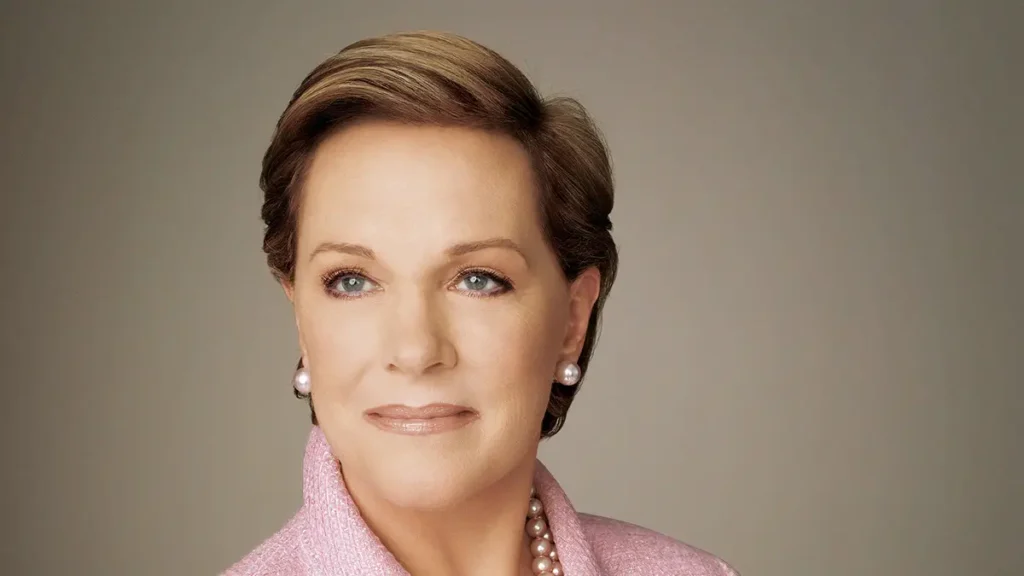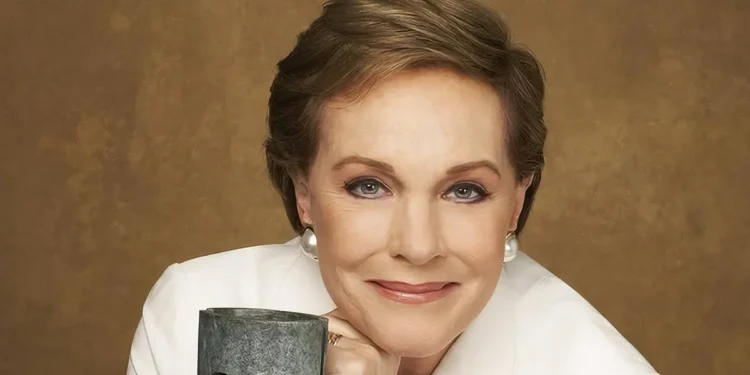Dame Julie Andrews reflects on a career that, at every turn, has ebbed and swayed to the sound of music.
Longevity in the movie world is a commodity few can lay claim to, not least when the projects that made a certain star famous were being projected onto cinema screens over five decades ago.
A Star Before 30
By that notion then, it seems unfathomable that Julie Andrews, an octogenarian – albeit only in age, given the elegance, sharpness and energy she invests in press and social engagements – hadn’t even hit 30 when Mary Poppins and The Sound of Music enchanted a nation.
Those two movies, released within seven months of each other as a cheerful, charming countenance to the vigour and fervour of the emerging Swinging Sixties, belied an upbringing which featured poverty and hardship, not least because it came as the UK struggled to regroup after World War II.
A Journey to Broadway
Yet Andrews was well and truly on her way, and by 1954, having already performed on the West End stage and at the London Palladium, she found herself leaving UK shores for a stint on Broadway.
“The speed with which opportunities came along was really very reflective of how the country was getting back on its feet after the war,” she begins. “I’ve always considered myself very fortunate to have been the age I was, at a time when people were thrilled to be free again, desperate to be entertained and intent on moving forward without fear of what war brought about.”
Breakthrough with Mary Poppins
After a number of years on stage, her screen debut came in 1964 with Mary Poppins – a movie that truly catapulted the actress into full, fervent acclaim. She was hand-picked for the role by Walt Disney himself, who had seen her star as Queen Guinevere in Camelot on Broadway. Speaking at the premiere, the film producer animator and entrepreneur said, “She turned me down! I couldn’t understand it.
“It soon materialised it was because she was pregnant with her first child, and wanted to return to London. We were happy to wait for her because we knew just how perfect she was for the role.”

Accolades and Transition
Double Oscar and Golden Globe acclaim, both for Best Actress in Mary Poppins, was complemented by another Golden Globe for The Sound of Music, and the success of those movies had seemingly set the actress up for a long trail of success. In reality, her love of television projects curtailed what might have been a more extensive portfolio. By the time the 1980s had come around, modern filmmaking brought about younger central characters, equipped with more impactful, brash personas; so too then did Andrews recline into the shadows.
“I only ever looked back in order to be grateful for the opportunities I had been given. I am happy for every experience and if success came to me early then perhaps that’s just luck that I haven’t had to toil for so many years to get that.”
A Revival in the New Millennium
And yet a revival was to come Julie’s way – she was made a Dame at the turn of the Millennium, as a generation of disenchanted filmgoers began to recognise again the actress’s iconic status, and embarked on a renaissance, which included The Princess Diaries – the movie that launched the career of a certain Anne Hathaway – her work in the Shrek movies, through Despicable Me, Aquaman and the recent Minions: The Rise of Gru.
It’s fair to say Julie Andrews’ imprint on modern cinema is now just as strong as her much-referenced ‘golden era’ of the 1960s.
Never Losing Sight
“Through it all, I have never lost sight of the fact people have paid money to come to see me – whether you are on a cinema screen, on Broadway, or just sat in front of an audience talking about memories, you’ve always got to entertain. And you know, the arts will outlive governments, societies and even the very civilisations which created them.”








